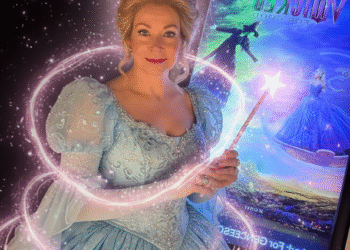
Plus: The truth behind CapCut’s new terms of service; casual restaurants communicate updates to old-school audiences.
If you’ve used the internet in any capacity the last few months, you’re probably familiar with Labubu dolls, a Chinese doll/plush hybrid that’s usually depicted with pointy ears and a vaguely unsettling smile. Sold in blind boxes, where purchasers aren’t sure exactly which doll they’re purchasing, the collectibles have been popular in China since 2022 but since spread across Asia and, more recently, to the United States.
The little monsters have inspired cult followings and rabid fans. Videos of people unboxing their Labubus to see which they got rack up millions upon millions of views.
And why are they so popular? Perhaps the BBC said it best: “Like most viral trends, Labubu’s appeal is hard to explain – the result of timing, taste and the randomness that is the internet.”
But there are two factors that everyone generally agrees contributes to their popularity. One is the blind box aspect. People love a surprise – the anticipation and experience of opening the product as important as the product itself. It also serves as a key driver of interest as people post videos to share the experience with others, which in turn creates more people who want that experience for themselves.
And that’s the second factor: The toys are popular because the toys are already popular. The more people want them, the more people want them.
Why it matters:
You, dear reader, are probably not tasked with making a quirky toy go viral. If you are, congratulations. But no matter what industry you’re in, Labubu’s lessons can be applied to your PR practice.
The biggest takeaway, unless you already have a ragingly popular product, in which case, congratulations, is that the experience of the product can be part of the PR itself. What about your good or service will inspire people to share it with others? Is it beautiful packaging, a unique greeting at your locations, a small gift given with service?
PR is usually not a part of the product team. But that may be an overlooked opportunity. Labubus aren’t popular only for their looks (this crusty Millennial says they’re popular despite their looks). It’s because they inspire people to talk, to share, to spread on social media. Which makes more and more people want to do the same.
Editor’s Top Reads:
- Remember when TikTok went dark in America for a terrifying 12 hours back in January? That all seems like a distant nightmare now. President Donald Trump has once again extended the country’s sell-or-face-a-ban ultimatum for another 90 days, and there’s no reason to think that won’t extend indefinitely. On the beaches of Cannes, the New York Times reports that no one seems concerned about the ban, from influencers to brands to TikTok itself. “No one’s talking about the ban or not. Everyone’s like, we’re going on, it is what it is,” American Eagle CMO Craig Brommers told the Times. Khartoon Weiss, TikTok’s vice president of global business solutions, told reporters they were “absolutely confident in a resolution” and that they were working with businesses to “to be a responsible partner and a predictable partner.” Nonetheless, while TikTok has methodically courted Trump’s approval, the famously mercurial president could change his mind at any time. Businesses should not be lulled into a false sense of security. By all means, keep using TikTok. But it’s smart to continue to build your presence elsewhere and to remember that all social media followings are built on sand.
- In other TikTok news, CapCut, the hyper popular editing tool created by the clock app, has received a wave of backlash for its updated terms of service. A video from a social media manager racked up millions of views when she said the editing app now kept rights to use your videos – even if you never published them. And that’s true! But it’s also been true for years, Smart Company reports. The only major change to the licensing section of the TOS clarifies that “you acknowledge and agree that you allow us to upload such content to our server.” Now, this still isn’t a great provision if you’re a business using the app – your video could be used in commercials or case studies and there’s nothing you can do about it. This is equally a reminder not to freak out over scaremongering claims about TOS updates … and also to have legal vet the tools you’re using.
- Old-school casual dining chains like Red Lobster and Cracker Barrel are walking a fine line as they try to update their concepts for a younger audience while not alienating their older stalwarts. The restaurants aren’t just facing challenges when it comes to changing menus, service and décor, but also when it comes to explaining these changes. “We’re here to take them through it because we want them to love the brand,” Cracker Barrel CEO Julie Felss Masino said during a Wall Street Journal event. In her case, that means reassuring customers that even though alcohol is now available at the country store, “No one is getting drunk at Cracker Barrel.” For Red Lobster CEO Damola Adamolekun, that means stepping into the spotlight himself with a new commercial that promises “real talk, real change” at the stores. Both case studies show the importance of the chief executive in guiding customers through times of massive change. By being honest and open about what’s changing and what never will, these leaders make customers feel heard, even if the walls are a different color or a few menu items disappear.
Allison Carter is editorial director of PR Daily and Ragan.com. Follow her on LinkedIn.
The post The Scoop: The meteoric rise of Labubu appeared first on PR Daily.













